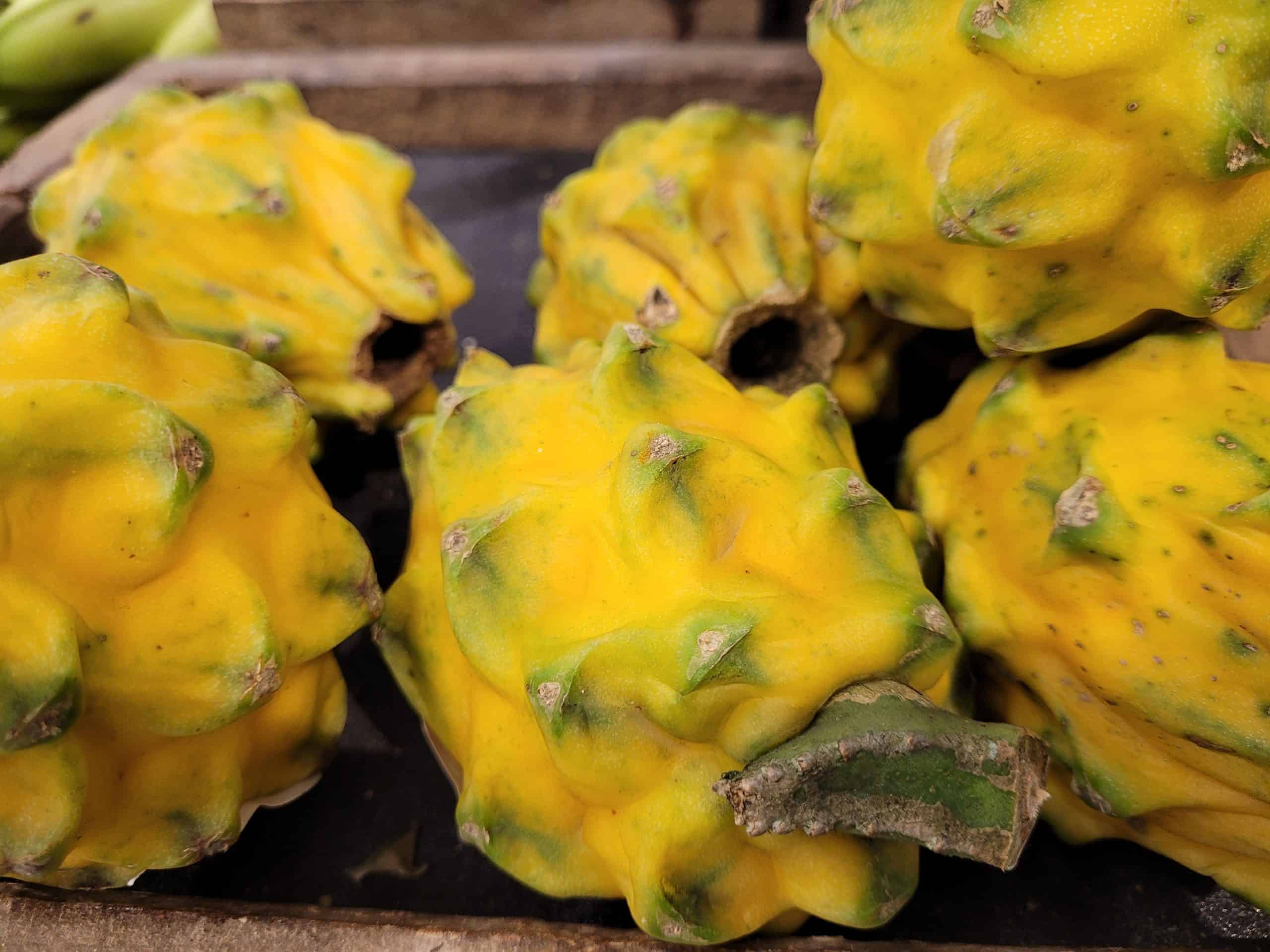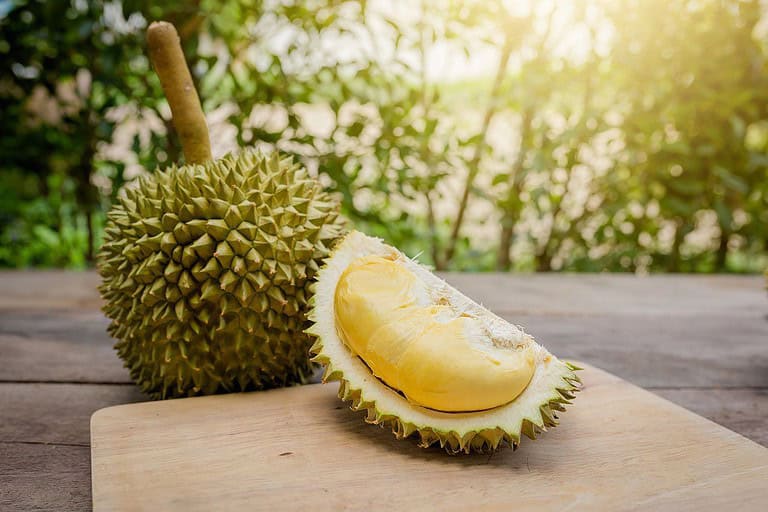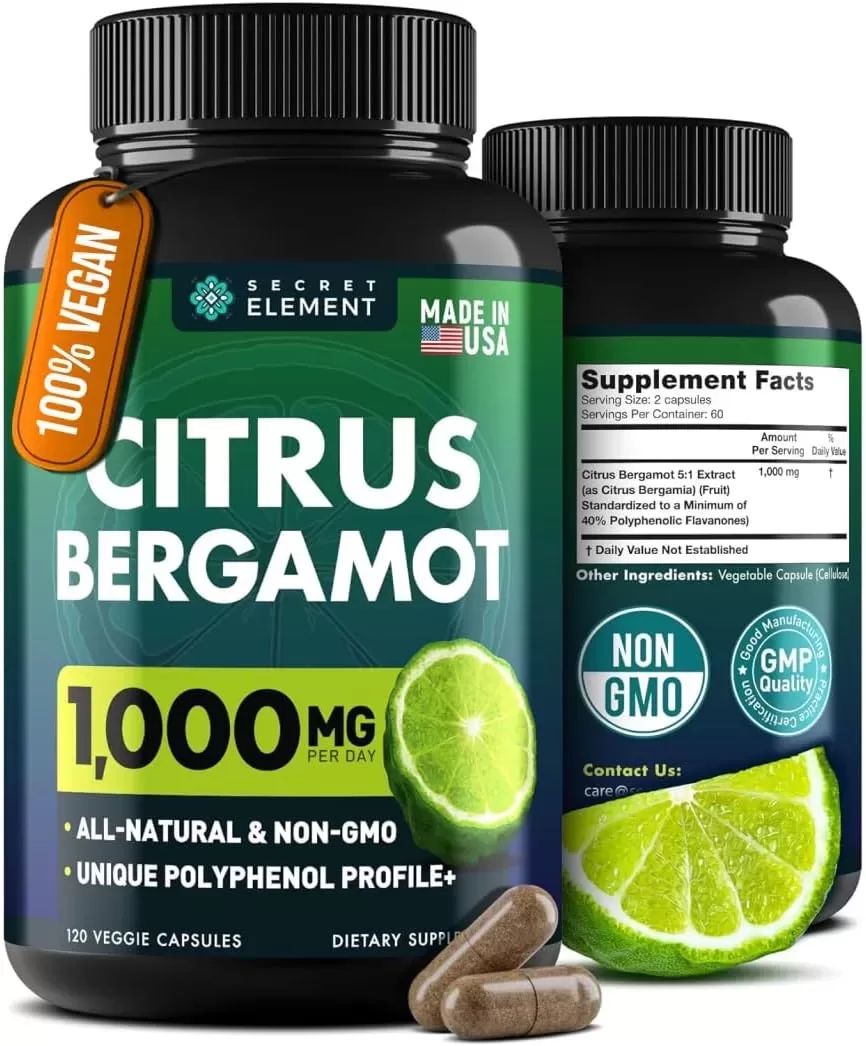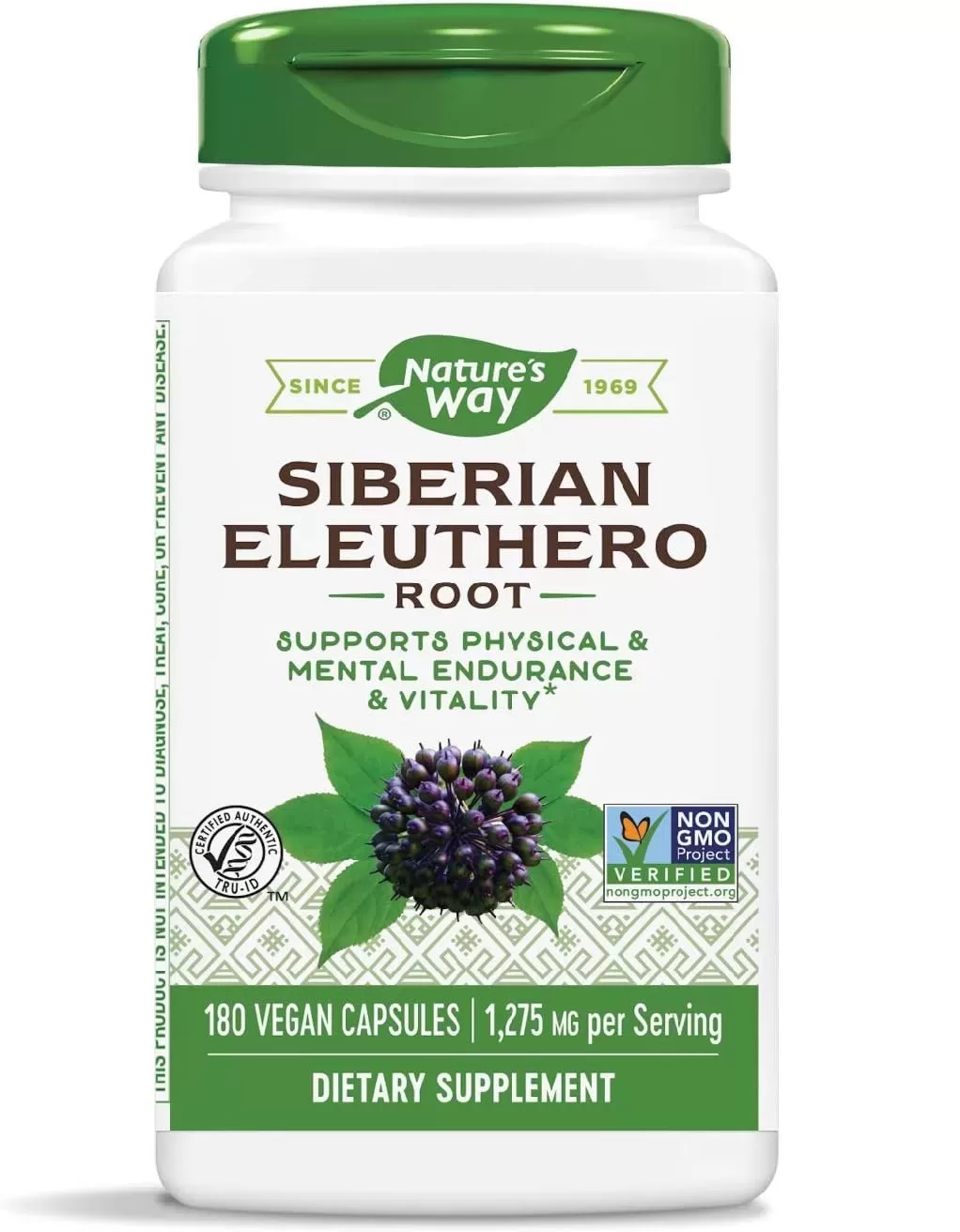Let’s delve into the fascinating world of spiny fruits. From the iconic Rambutan, a spiky red delight, to the controversial durian, a pungent powerhouse, we explore a diverse range of spiky fruits from around the globe that you can also turn into juices or desserts.
Are you curious about the spiky green fruit that grows on trees in tropical regions or through backyard gardening? Or perhaps you’ve heard tales of the spiky fruit that’s banned in certain places? This comprehensive guide will introduce you to a variety of spiky fruits, including those with white, creamy interiors and those that might surprise you with their unusual appearance. So, let’s embark on a journey through the spiny side of the fruit kingdom!
Yellow Spiny Fruits
Discover the vibrant world of yellow spiny fruits! These golden delights, often overlooked, offer a unique blend of flavors and textures. From the spiny exterior to the sweet, juicy interior, these fruits are a true culinary treasure.

1. Jackfruit
Jackfruit, scientifically known as Artocarpus heterophyllus, is native to the Western Ghats of India. It has been cultivated in the region for thousands of years, with archaeological evidence suggesting its presence as far back as 3,000 to 6,000 years ago. Over time, jackfruit spread to other parts of South and Southeast Asia, including Bangladesh, Myanmar, Nepal, Thailand, Vietnam, China, the Philippines, Indonesia, Malaysia, and Sri Lanka.
In the 18th century, jackfruit was introduced to Brazil and other tropical regions, where it has become a popular fruit due to its versatility and nutritional value. Today, jackfruit is grown in many tropical and subtropical countries around the world, including parts of Africa, the Caribbean, and the Pacific Islands.
The jackfruit, a spiny marvel, claims the title of the world’s largest tree-borne fruit. Native to the Indo-Malaysian region, this tropical giant can weigh up to a hefty 40 pounds and is now cultivated in many warm climates globally. Beneath its formidable, spiny exterior lies a sweet, pulpy flesh that can be enjoyed raw or cooked. Its chewy texture makes it a popular meat substitute for vegans.
Packed with essential nutrients, a 100-gram serving of jackfruit offers a bounty of vitamins, including B2, B3, B9, B6, and C, as well as minerals like calcium, phosphorus, and magnesium. As a rich fiber source, jackfruit promotes digestive health and can help prevent constipation.
Additionally, research suggests that jackfruit may offer a range of health benefits, such as lowering blood pressure, protecting skin from sun damage, regulating blood sugar levels, and preventing stomach ulcers.

2. Durian
The durian, a distinctive Southeast Asian fruit, often earns the title of “King of Fruits.” It is believed to have originated in the tropical rainforests of Borneo and Sumatra. Archaeological evidence suggests that durian has been consumed by humans for at least 7,000 years. The fruit was first described in Western literature by the Portuguese explorer Gaspar Correia in the 16th century. Today, durian is widely cultivated in Malaysia, Indonesia, Thailand, and the Philippines, and it has also gained popularity in other parts of the world, including Singapore and China.
This large, spiny fruit, which can weigh up to 8 pounds, is renowned for its potent, divisive odor that has led to bans in many public places across the region. Despite its controversial scent, the durian is a nutritional powerhouse.
A single cup of chopped or dried durian provides a significant amount of carbohydrates, protein, fiber, and healthy fats. Additionally, studies suggest that durian may offer various health benefits, including reduced cancer risk, lower blood sugar levels, enhanced immune function, and improved heart health.

3. Kiwano (Horned Melon)
The kiwano, or horned melon, is a unique African fruit characterized by its bright yellow skin and distinctive spiny projections. The kiwano fruit, also known as African horned cucumber, is native to the Kalahari Desert region in southern Africa, spanning parts of Namibia, Botswana, and South Africa. It has been a traditional food source for indigenous African cultures for thousands of years.
In recent years, kiwano has gained popularity worldwide and is now grown in various countries, including the United States, Portugal, Italy, Germany, Chile, Australia, and New Zealand. This versatile fruit can be enjoyed fresh or cooked, including its edible seeds. Kiwano adds a refreshing twist to smoothies, yogurt parfaits, or even as a crunchy topping for salads.
Packed with essential vitamins and minerals, kiwano is a low-calorie, low-fat, and low-carb option. This hydrating fruit can help regulate blood sugar levels, boost red blood cell production, and even improve mood.

4. Yellow Dragon Fruit
Yellow dragon fruit, also known as pitaya, is believed to have originated in the tropical regions of southern Mexico and along the Pacific coasts of Guatemala, Costa Rica, and El Salvador. Archaeological records indicate its existence in Central America as early as the 13th century, with mentions in Aztec literature. Spanish explorers documented the fruit in the 16th century, and it was subsequently spread to other parts of the world, including Southeast Asia. Today, yellow dragon fruit is widely cultivated in East Asia, South Asia, Southeast Asia, the United States, the Caribbean, Australia, and throughout tropical and subtropical regions.
Dragon fruit comes in three vibrant varieties: yellow-skinned with white flesh, red-skinned with red flesh, and red-skinned with white flesh. Among these, the yellow-fleshed variety is renowned for its exceptional sweetness.
This tropical delight is a modest source of essential nutrients, including vitamin C, magnesium, iron, and carbohydrates. While not an antioxidant powerhouse, dragon fruit effectively combats free radical damage, a major contributor to skin aging. Incorporating dragon fruit into your diet can help you maintain youthful, radiant skin.
Red Spiny Fruits
Red spiny fruits, with their vibrant hue and distinctive texture, add a touch of exotic flair to any meal. These tropical treasures, often bursting with sweetness and unique flavors, are a feast for the senses.

5. Black Mulberry
Black mulberry, scientifically known as Morus nigra, is native to western Asia, particularly regions that include Iran, Iraq, and Turkey. Historical records suggest that black mulberry has been cultivated since ancient times, with its cultivation spreading westward to Italy by the 15th century for raising silkworms. The Romans also introduced black mulberry to southern France and southern England around the 1st century AD. Over time, it has been naturalized in various parts of Europe and North America.
The black mulberry tree is primarily cultivated for its leaves, which are used as livestock fodder. However, its succulent berries, available in black, white, and red varieties, have gained popularity for their sweet taste, rich nutritional profile, and potential health benefits.
Scientific research suggests that black mulberry may contribute to lower cholesterol levels and reduced cancer risk. However, individuals with birch pollen allergies should exercise caution, as the fruit may trigger allergic reactions.

6. Lychee
The lychee (Litchi chinensis) is native to southern China, where it has been cultivated for over 2,000 years. Historical records from the Han Dynasty (111 BC) mention lychee cultivation in the region1. Over time, the fruit spread to neighboring areas of southeastern Asia, including Burma (Myanmar), India, and the East Indies.
By the 19th century, lychee trees were introduced to the West Indies, South Africa, and Madagascar. The fruit reached Hawaii in 1873, Florida in 1883, and California in 1897. Today, lychees are enjoyed worldwide and are particularly popular in tropical and subtropical regions.
The lychee is a small, red fruit renowned for its sweet, floral flavor. While its bumpy, inedible skin may deter some, the delicate, white flesh within is a true delight. Beyond its exquisite taste, lychee is a rich source of antioxidants, minerals, and vitamins. Although specific studies on lychee’s health benefits are limited, its antioxidant content holds promise in potentially preventing diabetes and heart disease.

7. Rambutan
Rambutan, scientifically known as Nephelium lappaceum, is native to Southeast Asia, particularly the Malay Archipelago, which includes Indonesia, Malaysia, and Brunei. The fruit has been cultivated in these regions for thousands of years and is a well-known delicacy throughout the area.
In the 19th century, the Dutch introduced rambutan from Indonesia to Suriname in South America, and it has since spread to other tropical regions, including Colombia, Ecuador, Honduras, Costa Rica, Trinidad, and Cuba.
The rambutan tree can grow to impressive heights of 80 feet. Its distinctive fruit, covered in soft, hair-like spines, may appear intimidating, but its flesh is incredibly soft, creamy, and sweet. Rambutan is a nutritional powerhouse, packed with vitamin C and essential minerals like iron, potassium, and calcium. Its high water content makes it a hydrating and weight-loss-friendly fruit. The fruit’s insoluble fiber content promotes digestive health and can alleviate constipation.
While rambutan can be enjoyed fresh or cooked, it’s crucial to avoid consuming the peel and seed. The seed is inedible, and the peel may pose health risks.

8. Prickly Pear (Cactus Fruit)
Prickly pear, scientifically known as Opuntia ficus-indica, is native to the Americas, particularly Mexico and the Caribbean islands. The cactus has been cultivated for thousands of years and was introduced to other parts of the world by early explorers. It thrives in arid and semiarid regions and has become naturalized in many areas, including the Mediterranean region, North Africa, and Australia.
Prickly pear is valued for its edible fruit and pads, which are used in various culinary dishes.Beyond its distinctive appearance, this fruit offers a delightful taste and a host of health benefits. Packed with essential nutrients, prickly pear is a good source of protein, potassium, calcium, carbohydrates, vitamin C, and various other vitamins and minerals. Its polyunsaturated fatty acid content contributes to healthy hair and skin.
Additionally, individuals with type 2 diabetes may benefit from the fruit’s ability to help regulate blood sugar levels.
Green Spiny Fruits
Green spiny fruits offer a refreshing and unique taste experience. From the tropical to the temperate, these fruits, with their tough exteriors and succulent interiors, are a delightful addition to any diet.

9. Breadfruit
Breadfruit, scientifically known as Artocarpus altilis, originated in the New Guinea and Indo-Malay region. It has been cultivated for over 3,000 years in these areas. The fruit was spread throughout the Pacific Islands by voyaging islanders who carried it on their early expeditions. Europeans discovered breadfruit in the late 1500s, and it was later introduced to the Caribbean and other tropical regions during the Colonial Era.
Today, breadfruit is grown in 90 countries worldwide, including South and Southeast Asia, the Pacific Ocean, the Caribbean, Central America, and Africa. This large, round fruit, which can weigh up to 11 pounds, offers a sweet, creamy flesh that can be enjoyed raw or cooked.
Rich in essential vitamins and minerals, breadfruit is a nutritious addition to any diet. Its high fiber content, particularly compared to jackfruit, promotes digestive health. Additionally, breadfruit has been linked to various health benefits, including reduced muscle and joint pain, protection against bacterial infections, and improved eye health.

10. Soursop (Graviola)
The soursop fruit, also known as graviola or guanábana, is native to the tropical regions of the Americas, particularly Central and South America. Historical records indicate that indigenous tribes in these regions have used soursop for centuries, both for its edible fruit and for traditional medicinal purposes. The fruit was later introduced to the West Indies and northern South America by European colonizers in the 16th century.
Today, soursop is widely cultivated in tropical and subtropical regions around the world, including Asia, Africa, and the Caribbean. This prickly green fruit is a nutritional powerhouse, packed with fiber, vitamin C, potassium, and other essential minerals.
Almost every part of the soursop plant, from its leaves to its stem, has been traditionally used for medicinal purposes. In addition to consuming the fruit raw or cooked, it is also applied topically to the skin.
Soursop’s high antioxidant content has been linked to reduced risks of diabetes, heart disease, and cancer. Studies also suggest that soursop may possess antibacterial properties, including the ability to combat yeast infections. While soursop can be enjoyed in various ways, such as in smoothies or teas, it’s crucial to avoid consuming the seeds. These seeds contain a neurotoxin that can be harmful if ingested.

11. Cherimoya (Custard Apple)
The cherimoya (Annona cherimola), also known as the custard apple, is native to the highland valleys between the Andes Mountains of Ecuador and Peru. It has been cultivated in these regions for centuries. Following the Spanish conquest in the 16th century, cherimoya spread to other parts of South and Central America, and eventually to Spain and other subtropical regions. Today, cherimoya is grown in various tropical and subtropical areas around the world, including South Africa, Australia, and the Mediterranean region.
The cone-shaped cherimoya boasts a spiny, leathery exterior that encases a sweet, creamy flesh with a pineapple-like flavor. Rich in vitamins, minerals, and fiber, cherimoya offers a range of potential health benefits, including reduced inflammation, improved heart health, and a stronger immune system. However, it’s important to exercise caution when consuming cherimoya seeds. Excessive consumption of these seeds can be harmful due to the presence of toxins.
Final Thoughts
Spiny fruits, while often overlooked, offer a unique and flavorful addition to any diet. Always consult with a healthcare professional like Trish Tucker May before incorporating new fruits into your diet, especially if you have underlying health conditions or allergies. By appreciating the diverse world of spiny fruits, we can unlock a wealth of culinary and nutritional possibilities.













Comments are closed.